
 Why is he famous?
Why is he famous?
A fixture on Saturday Night Live for seven seasons, Ferrell drew laughs after impersonating celebrities like Alex Trebek, Janet Reno and George W. Bush. He acted in several SNL spinoff movies like A Night at the Roxbury, Superstar and The Ladies Man before leaving the sketch comedy show to devote himself entirely to movies.
Biography
Born in Irvine, California, on July 16, 1967, John W. Ferrell (a.k.a. Will Ferrell), by his own account, was a typically normal child. Once comfortable in high school, however, he began with the jokes and started causing disturbances in class.
Showing flashes of his future self, Ferrell even invaded the school's public address system, doing different impersonations while announcing the morning news.
Following graduation, Will attended the University of Southern California and studied sports  information. He got his bachelor's degree and initially wanted to become a broadcaster. It took time, and a few failed jobs, for Will to realize that it was comedy, not journalism, that was his calling.
information. He got his bachelor's degree and initially wanted to become a broadcaster. It took time, and a few failed jobs, for Will to realize that it was comedy, not journalism, that was his calling.
When he finally gave in to his innate talents as a comedian, Ferrell shone. He joined the popular Los Angeles improv group, The Groundlings, and was soon well-known and capable enough to receive guest spots on the shows Grace Under Fire and Living Single.The big break
Soon, with the help of friend and fellow Groundling Chris Kattan, Ferrell got his biggest break; a chance on Saturday Night Live. Unfortunately, during his first season in 1995, Will had a hard time adapting to the demands of the popular NBC show. Often, he came out flat on television, appearing more nervous than relaxed.
After refocusing on his work, Ferrell returned to SNL inspired. Viewers of the show noticed a new star in Will, who soon became popular for his impersonations of former Attorney General Janet Reno, President George W. Bush and Jeopardy host Alex Trebek.
In addition to these bits, he starred in several reoccurring skits (remember the peppy Spartan cheerleader?) that made SNL a high-rated show once again.
During his run, Ferrell was able to experiment on the big screen as well. He played Mustafa in Austin Powers: International Man of Mystery (1997) and then did three SNL skit spinoff films: A Night at the Roxbury (1998), Superstar (1999) and The Ladies Man (2000). All the while cracking people up on TV, Ferrell continued to develop his onscreen skills in Jay and Silent Bob Strike Back and Zoolander (both in 2001).
The big screen
With all this work in film, the lure of the big paychecks and serious stardom could not be ignored. In 2002, Ferrell left Saturday Night Live to pursue his movie career.
Critics agreed that he left behind a legacy, highlighted by an Emmy nomination for Outstanding Performance in a Variety series for the 2000-2001 season. Will was also the highest paid SNL actor ever prior to leaving.
Now on his own, Ferrell did not take long to strut his stuff. He started out with a bang in the hilarious comedy Old School (2003) and drew praise after guest hosting the Late Show with David Letterman.
The praise continued as Will's 2003 Christmas movie Elf was so popular, there was even talk of an Oscar nomination for him.
In 2004, Will became a father when his wife, Viveca Paulin, gave birth to their son, Magnus.
That same year, he starred in several hits, including Anchorman, and A Confederacy of Dunces in 2004, Curious George, and Bewitched in 2005, and Stranger Than Fiction and Talladega Nights: The Ballad of Ricky Bobby in 2006 and Bewitched.
Quotes
"I'm not really an exhibitionist. I'm drawn to the outrageous stuff because it's fun, not because it's some deep compulsion. I'm not [a] tortured, anger-stoked, deeply neurotic comic -- just a pretty low-key normal guy. A 'hey, the glass is half-full' kind of a guy. But please keep it quiet, or I may never work again." -Will Ferrell

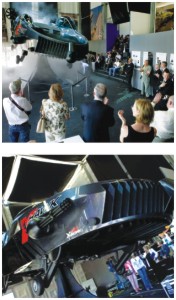 There's hope yet for the flying car. Really. The Jetsons-era dream of personal air vehicles (PAVs) has recently received a few gasps of fresh air (click here for an update from Resident Roboticist Daniel H. Wilson). An advocacy group, the CAFE Foundation, has launched a $250,000 PAV challenge for new and interesting flight concepts. Plus, companies from the aviation (Boeing) and automotive (Honda) industries are pursuing mainstream airborne-vehicle technology, though no designs or deadlines have been announced. In the meantime, several independent companies have been researching and developing fly/drive vehicles you might see flying someday toward a driveway near you.
There's hope yet for the flying car. Really. The Jetsons-era dream of personal air vehicles (PAVs) has recently received a few gasps of fresh air (click here for an update from Resident Roboticist Daniel H. Wilson). An advocacy group, the CAFE Foundation, has launched a $250,000 PAV challenge for new and interesting flight concepts. Plus, companies from the aviation (Boeing) and automotive (Honda) industries are pursuing mainstream airborne-vehicle technology, though no designs or deadlines have been announced. In the meantime, several independent companies have been researching and developing fly/drive vehicles you might see flying someday toward a driveway near you.
Moller Skycar M400
With production versions promised by 2010, this four-passenger beauty is the latest in a line of Moller Skycars dating back to 1962. Using four pairs of Wankel engines, the vehicle is designed for vertical takeoff and landing, and may eventually be capable of fully automated flight.
RANGE 750 miles
ALTITUDE Below 36,000 feet
TOP AIRSPEED 375 mph
PRICE $995,000 A $100,000 deposit holds one of the first 100 cars, refundable if FAA certification does not occur by Dec. 31, 2010.
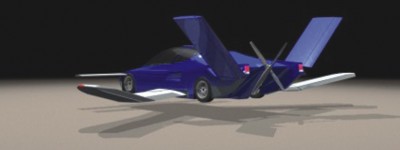
PROGRESS Tethered full-scale prototypes have hovered several feet off the ground.
POTENTIAL DRAWBACKS - Frequent delays and misleading claims led to an SEC fine in 2003.
Labiche Aerospace Flying Sports Car FSC-1
The four-passenger FSC-1 has been in development since the late 1980s, and reached preproduction in 2007. Like a Transformer toy, the FSC-1 turns from car to single-propeller airplane in 30 seconds. A true hybrid, it will operate via existing small airports and highways.
RANGE 950 miles
ALTITUDE Below 34,000 feet
TOP AIRSPEED 275 mph
PRICE $175,000 The FSC-1 is a kit, assembly required. The $20,000 deposit is refundable if performance benchmarks aren't met.
PROGRESS A prototype will be on display in Los Angeles this year; production is slated for 2008.
POTENTIAL
DRAWBACKS Plans to fly it to the 2007 Oshkosh air show were scrapped due to testing "conflicts."
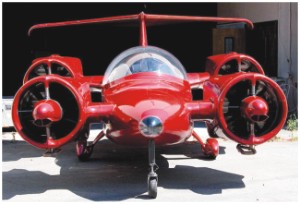
Urban Aeronautics X-Hawk
Conceived by a former Boeing engineer in 2001, the 11-seater X-Hawk is marketed as, among other things, an emergency vehicle (to go where choppers can't). It uses enclosed turbine-powered, ducted fans for lift and a system of vanes for stability and maneuvering.
RANGE 380 miles
ALTITUDE Below 12,000 feet
TOP AIRSPEED - 161 mph
PRICE $5 million to $6 million The X-Hawk's price reflects its proposed emphasis: fewer civilian thrill rides, more military or medical response.
PROGRESS - Exists largely as a set of plastic moldings and a virtual computer simulation.
POTENTIAL DRAWBACKS - Based on 1960s “Air Jeep” technology, which has yet to prove itself in 50 years.

The latest strategy game to hit the PC is Spore from Electronic Arts. It's a journey from the origin and evolution of life through the development of civilization and technology and eventually all the way into the deepest reaches of outer space.
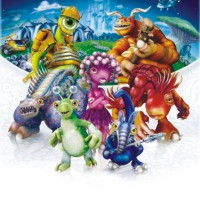 Begin your odyssey at the dawn of life as a simple microbe just trying to survive, then use the fun, intuitive Editors to evolve the creature from its microscopic origins into an intelligent, tool-using race.
Begin your odyssey at the dawn of life as a simple microbe just trying to survive, then use the fun, intuitive Editors to evolve the creature from its microscopic origins into an intelligent, tool-using race.
Guide your species as it builds (and the player designs) villages, buildings, cities, and vehicles. Along the way to becoming a global civilization you can choose whether to hunt or forage, attack or trade, be nice or play rough.
But after a while Spore pulls an about-face when you reach the civilization stage. Gone are your creature-controlling days; your beloved brutes, once the jewels of your eye, will now populate the cities, and you will instead create fleets of land, sea, and air vehicles. Now you don't have just a tribe--you have an entire society to handle, though you shouldn't let the name of the stage lead you to think that you'll find the complexity of Sid Meier's classic series here.
The creation tools are just as easy to use--and just as comprehensive--as those of the creature creator. Designing a mass of metal may not have the same charm as molding a living being from scratch, but the tools give you more control over patterns and colors, so expect to lose more hours of your life tinkering with the possibilities. However, the happiness mechanic is so simple that most players should be able to beat the stage on even the highest difficulty setting without giving it much thought.
And in its final transformation, Spore enters the space stage, where many of the previous gameplay elements coalesce. As a result, this stage feels like an actual destination, and while it's not nearly as complex as the space exploration games it cribs from, it does exhibit the great charms of the early stages that are missing from the civilization stage. This is partially because it harks back to the creature stage, putting you in control of a single 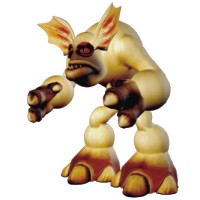 spacecraft (one you build using the wonderful creation tools, of course), and sending you off to explore the great black beyond. The scope of this stage is suitably massive. You travel from star to star, exploring newly discovered planets and searching for your galactic neighbors, and you can skim the terrain of a planet--or pull the camera light-years away to see the entire galaxy at a glance.
spacecraft (one you build using the wonderful creation tools, of course), and sending you off to explore the great black beyond. The scope of this stage is suitably massive. You travel from star to star, exploring newly discovered planets and searching for your galactic neighbors, and you can skim the terrain of a planet--or pull the camera light-years away to see the entire galaxy at a glance.
To expand, you can't just plop down a colony and watch it evolve. The economy moves much more slowly in this stage than in previous ones, so you need to be careful about how you spend funds based on how you wish to play. Nor can you just choose any planet. Some worlds are simply incapable of supporting life, while others need to have the environment altered to allow for expansion and population. This is where the terraforming tools come in.
Unsurprisingly, none of these elements are as deep as you would expect in a deep space strategy game, but the real joys come from swooping onto a planet and skimming its surface to see your own creations--and those of others--populating them, and in various stages of advancement. The stylized, colorful visuals keep your eyes constantly engaged, from big, bulbous trees to herds of tentacled younglings frolicking about. The animations are top-notch, so while it's hard to imagine what a bowlegged, long-necked crane with four toes on each foot would actually look like as it ambled about, Spore makes such sights look goofily authentic. It isn't a technical powerhouse; there is a good bit of geometry pop-in, and the game does not appear to support antialiasing. Its charming, exaggerated look more than makes up for it though, and on three separate machines of various specifications, Spore ran smoothly at the highest settings without a single crash.
Spore keeps a timeline of events, pinpointing every decision you've made and assigning you into broad categories based on your overall behavior (social, adaptable, and so on), so there's plenty of reason to try a different approach. Not that these varied approaches make for drastically different gameplay, but they do give you a reason to revisit the amusing moments that make Spore unique. Taken on their own, its pieces are nothing special. As parts of a singular ambitious vision, they work far better. Throw in the best customization tools seen in years and an enthusiastic community brimming with creativity, and you have a legitimately great game that will deliver hours of quality entertainment.
